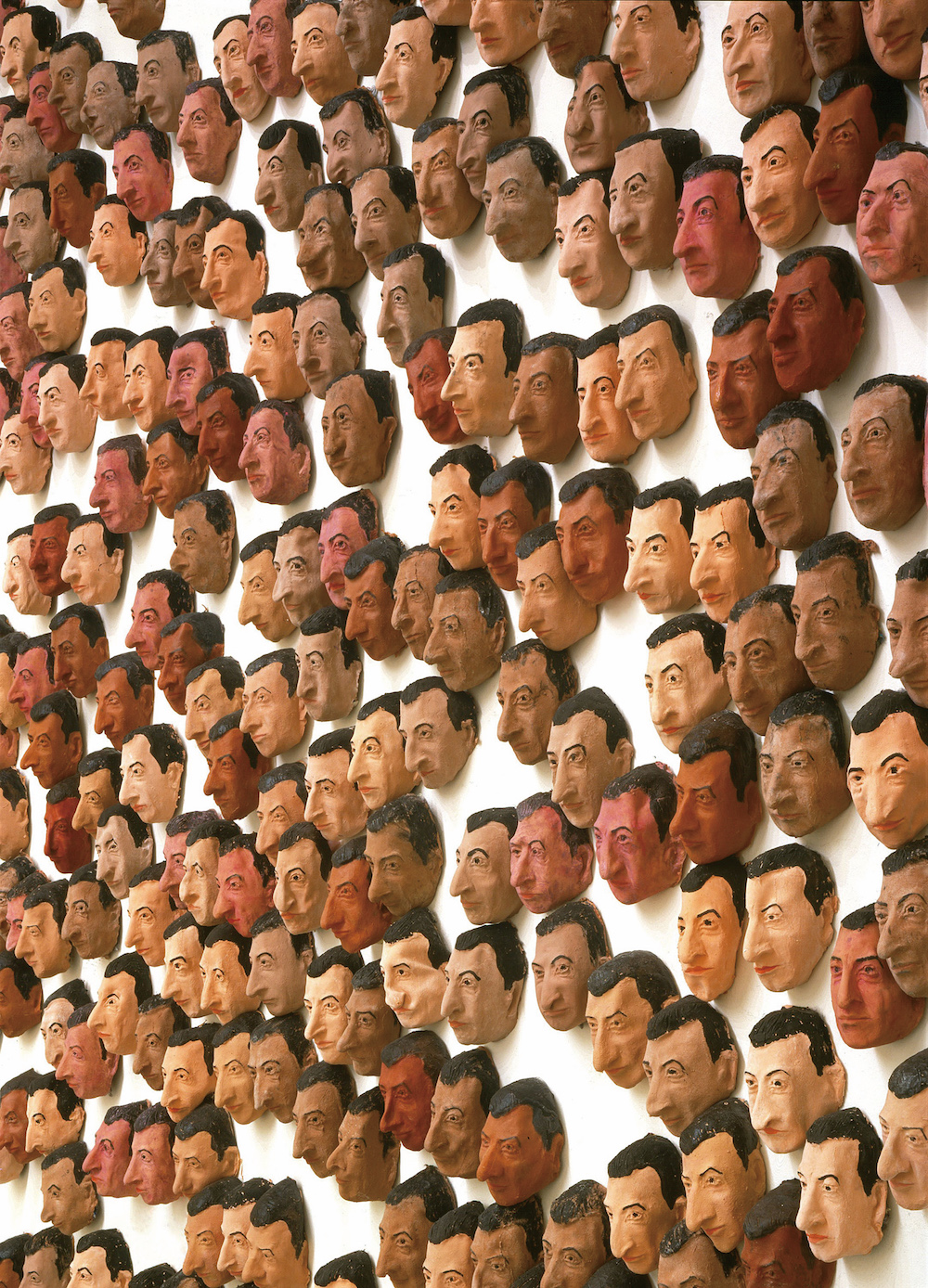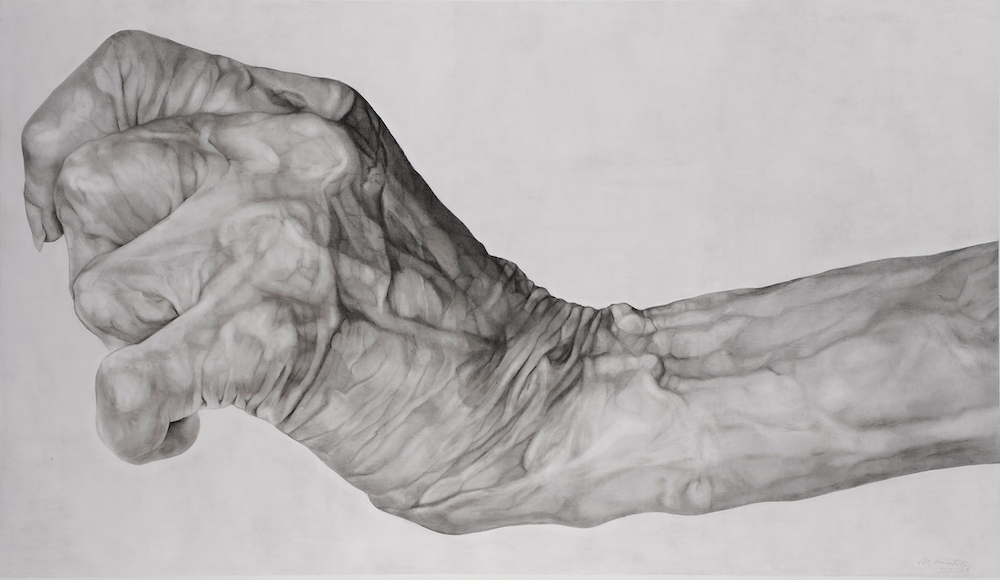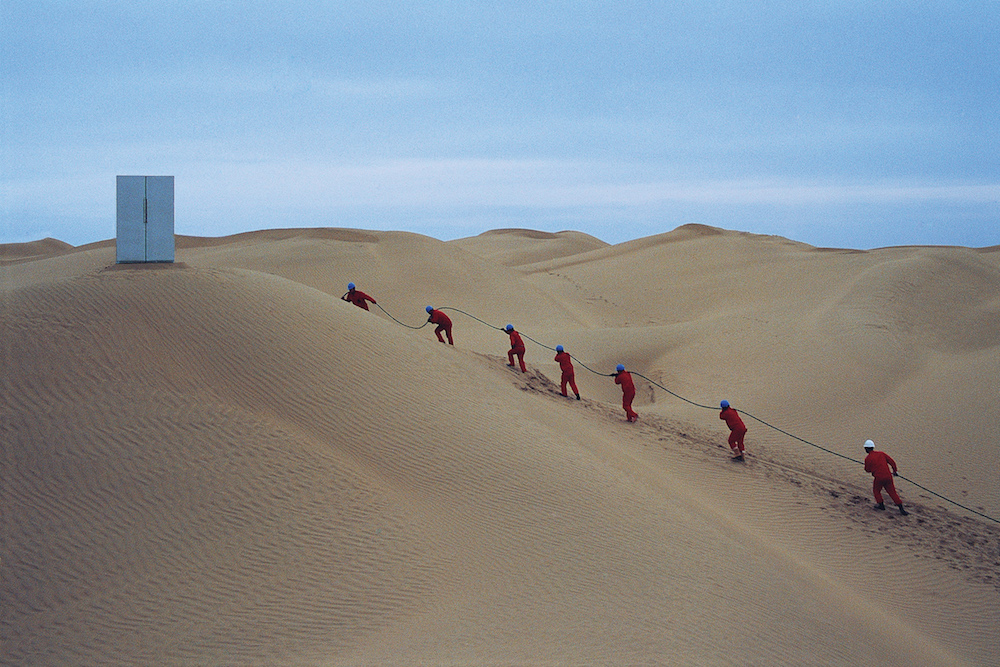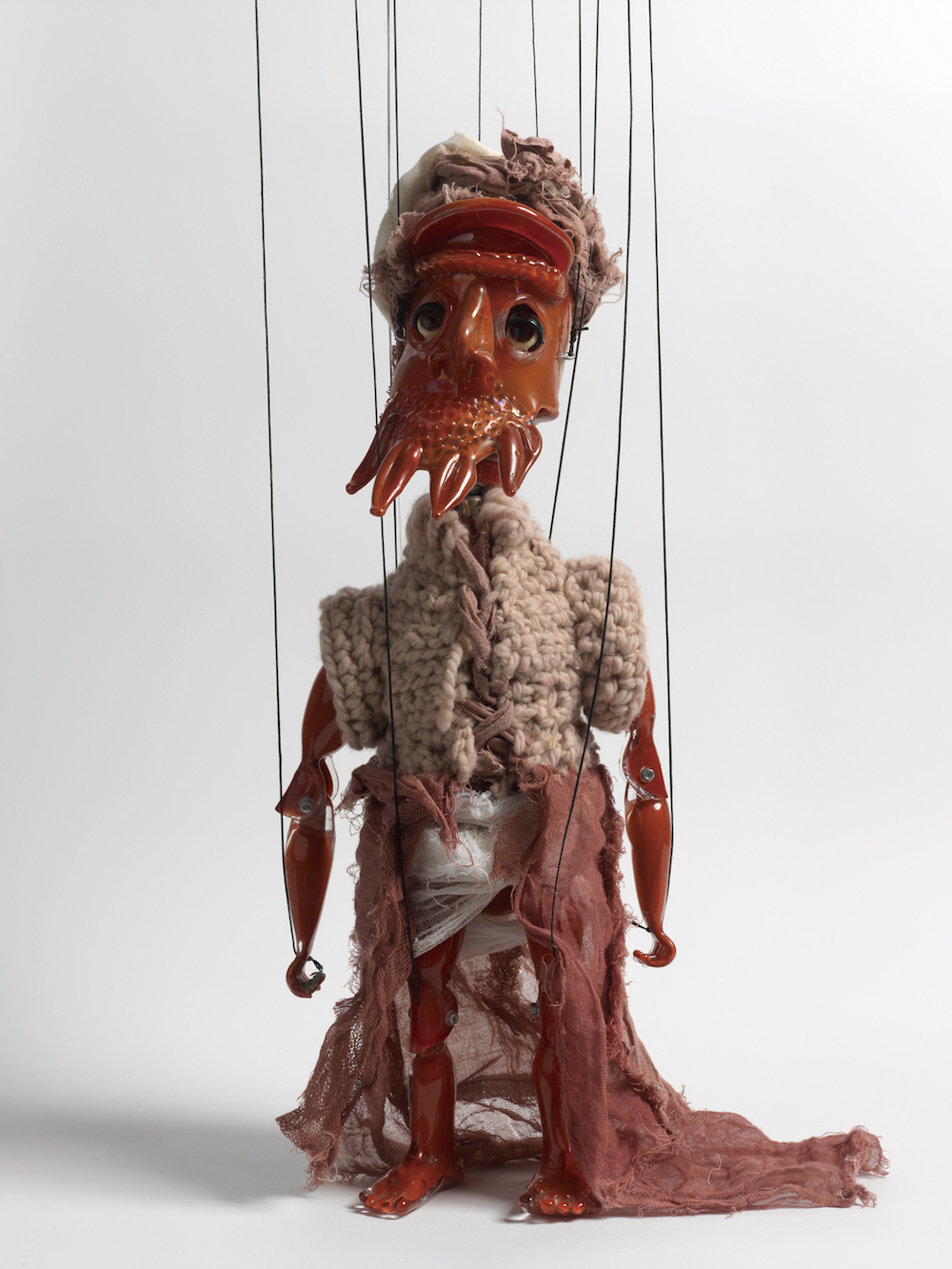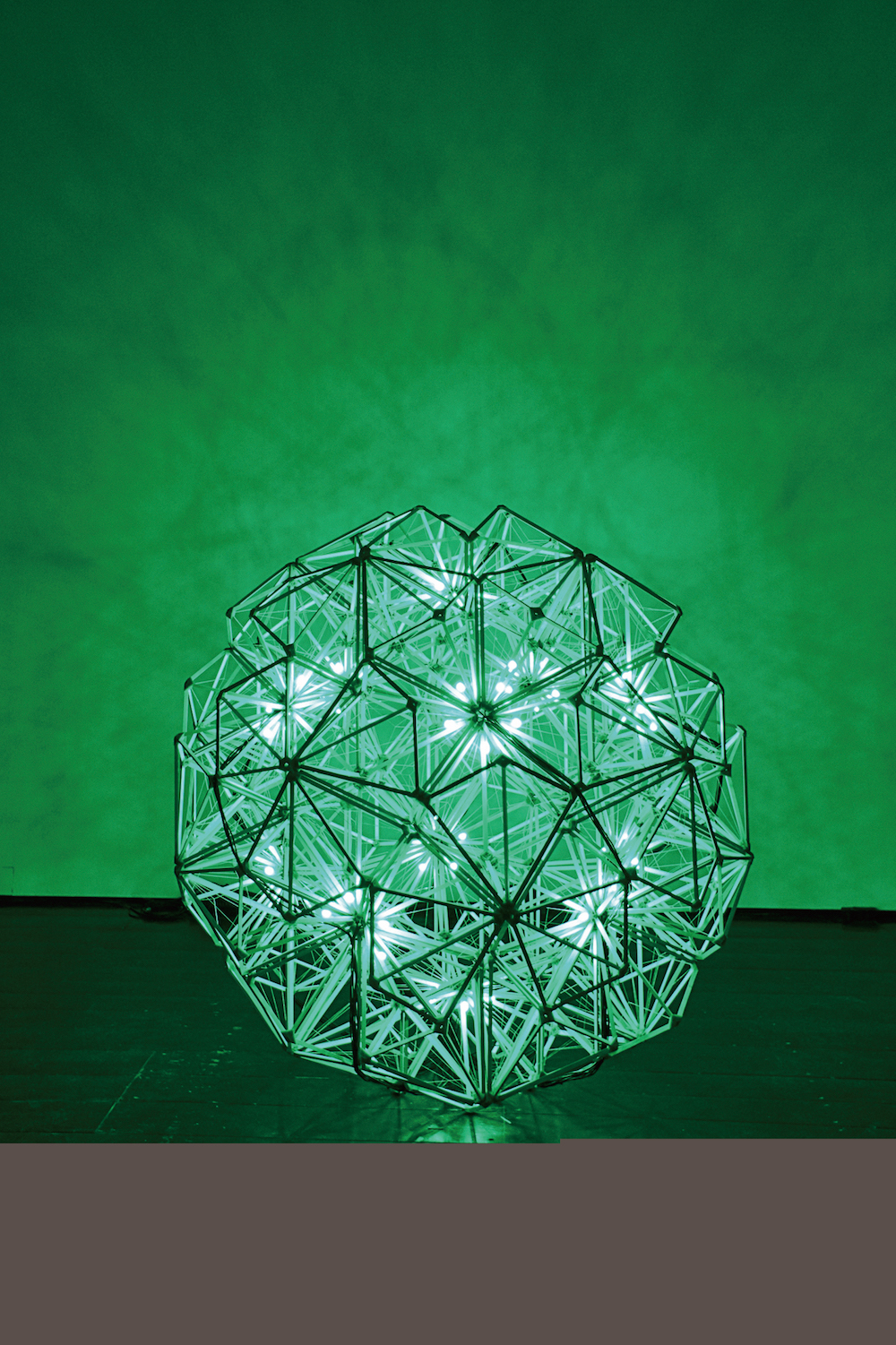The Yokohama Triennale launched on 4 August in the Yokohama Museum of Art, the Yokohama Red Brick Warehouse No.1 and in the basement of the Yokohama Port Opening Memorial Hall. A free shuttle bus tour has been organized from Minato Mirai Station and it is covered with a work of Jenny Holzer from the 1970s. The co-director of the Yokohama Triennale 2017, Miki Akiko (also the international artistic director of the Benesse Art Site Naoshima) has curated the Triennale with Eriko Osaka, the director of the Yokohama Museum of Art, and Tomoh Kashiwagi, its project director. Thirty-eight artists are participating in the Triennale, considering the theme “Islands, Constellations and Galapagos”, which considers how connectivity and isolation are linked. Talks by artists and creative thinkers will take place all through the Triennale, stimulating reflections on Japan while also contemplating how Japan connects with the world through contemporary art. Some stars of the international contemporary scene are involved, such as Ai Wei Wei, Maurizio Cattelan and Olafur Eliasson as well as Tatiana Trouvé, Ragnar Kjartansson, Paola Pivi, Wael Shawky and Sam Durant, with Japanese contemporary masters Susumu Kinoshita and Yukinori Yanagi. A 2016 artwork by Carsten Höller, Tobias Rehberger, Anri Sala and Rirkrit Tiravanija inspired by a surrealist game is also shown at the Triennale and is a must-see.
I spoke with Miki Akiko.
What is the place of the Yokohama Triennale in the art world and in Japan?
The Yokohama Triennale started in 2001 as one of the first biennials/triennials in Japan with national funding and with the aim to be international in context. It has strived to keep up with global and contemporary issues, looking at Japan from the outside as well as looking out from Japan, and maintaining a level of international visibility and artistic quality, we are now more or less recognized as one of the leading international exhibitions in Japan.
In the range of biennials and triennials around the world, Yokohama Triennale is mid-sized and it definitely has a human scale. Japan has witnessed a surge in the number of biennials and triennials being organized across the nation. Many of them are not based in cities but in the countryside. Yokohama, since its fourth edition, has based itself at Yokohama Museum of Art as a fixed location and has been pursuing its own path, for example by sometimes incorporating the collection into the contemporary art format.
I think it is very important that Yokohama, with its historical background as one of the first ports that opened to the world, should create bridges between the art community in Japan and those outside the country, and maintain a dialogue with contemporary issues through each edition.
The connected world and the isolated world are not always separate, especially considering the system of contemporary communication and networks. What are your theoretical references and your philosophical backgrounds for this Triennale?
I am not looking at geographic connectivity or isolation when I am thinking about these words. It is true that it is easy to connect through the internet, but at the same time, with the development of social media, some people appear to be gathering together into small, disparate groups of “island universes” and communities.
As you mention, connectivity and isolation are not always separated. In fact, they are two sides of the same coin and it is difficult to view them as conflicting positions. So the goal of this edition is to address the complexity of the world that cannot be simply categorized into black and white, left and right. Thus, I have not relied on a single thinker, but have convened a collection of thinkers in the process of conceptualizing the exhibition.
Parag Khanna, a global strategist, published Connectography, a book which visualizes how the world is now connected through our supply chain, transportation systems and others, and how connectivity could become a new asset, in place of the traditional nation-state-based sovereignty. Shunya Yoshimi, a sociologist, analyzes the world through the view from the ocean and islands. I can also think of the contributors to the publication, Insular Insight: Where Art and Architecture Conspire With Nature that I edited with Lars Muller in 2011. Also, many of the inputs came from the members of the conception meeting, consisting of art historians, curators, artists, philosophers and anatomists. Kiyokazu Washida, a philosopher, also mentions that it is time that the local regions (not the urban centers) assert their independence and Yoro Takeshi, an anatomist by profession but also a well-known insect researcher, says that “Between zero and one there lies infinity and this is the territory in which art operates.”
The Triennale aims to explore the views and works of artists who poetically and critically decode the connectivity and isolation of the twenty-first-century world. Can you tell me about these works and views?
In Zhao Zhao’s video Project Taklamakan he carries a refrigerator out into the Taklamakan Desert, his homeland and the site of frequent ethnic conflicts, connects it to power cables and drinks cold beer. He sheds a light on the Silk Road’s history of transmitting and exchanging goods, people and cultures, as well as its current isolated state.
Map Office, through their extensive research into islands, territories and territorial water, create installations in which works evoking various political and social issues are arranged like islands in an archipelago. They’re showing an installation entitled Island Resorts, where they use ocean objects collected from around the world as materials. The body of work shows a way to manifest our desires for a lost island paradise. They provide a view that the idea of the island is about hope and aspiration for openness in thoughts and exploration.
Broomberg & Chanarin’s Trace fibre from Freud’s couch under crossed polars with Quartz wedge compensator (#1), is a work using the DNA samples of patients’ hair and other materials left on a chair of Sigmund Freud’s iconic couch. It is about rereading history with a different approach, in this case, using modern techniques to analyze historical facts and turn them into abstract-painting-like work.
The Propeller Group’s AK-47 vs. M16 fuses the projectiles from the Soviet and American weapons used during the Vietnam War inside a block of ballistics gel. The instant destructive power of the guns is frozen, rendering visual traces of a threatening moment.
Can you talk about the Japanese artist selection in this Triennale?
I do not know if it is possible to categorize the Japanese artists as “Galapagos-type”, but they are a group of artists who have kept their own pace and own paths, who have not submitted themselves to the trends of the art world. Ozawa Tsuyoshi, in recent years, has been working on The Return of… series, composed of narratives that blend fact and fiction and deal with charismatic and iconic figure “returns” to a different environment from their original world. His work for Yokohama is based on a Japanese art historian and philosopher, who was born in Yokohama but was internationally active during the Meiji [1868-1912] and early Taisho [1912-1926] eras, returning to Kolkata, India. His approach is multi-disciplinary and humorous.
UJINO, whose grew up in postwar Japan, connects his personal history to the social and cultural history of Japan, heavily influenced by the industrialization as well as Americanization in his new installation, Plywood Shinchi (vacant lot made of plywood).
Kinoshita Susumu’s pencil drawings render people who accept a solitary life without losing their dignity, including a former Hansen’s disease patient and others who have led unimaginable lives. His practice is simple yet profound and universal in his concept.
Hatakeyama Naoya is well known for his unique aesthetic sensibility to human-mediated landscapes such as clusters of skyscrapers, underground culverts, limestone mines and cement factories. In the Triennale, he primarily exhibits a series of photographs of the French manmade hills (spoil heaps) known as terrils, and a series taken in his hometown of Rikuzentakata, which he has frequently photographed since it was devastated by the Great East Japan Earthquake.
What would you say about the collaborative work by Carsten Höller, Tobias Rehberger, Anri Sala & Rirkrit Tiravanija for this Triennale?
Their collaborative work is inspired by the creative game Exquisite Corpse, developed by the Surrealists in 1920s Paris, and for the Triennale these works will be mixed with the Surrealist collection of the Yokohama Triennale. The process, as well as the images of the works of Exquisite Trust, provide important elements in talking about the key concepts of the Yokohama Triennale 2017: connectivity and isolation. This suite of works, in which the images by four artists who differ in their technique and style are aggregated into one single piece of work, is, in fact, the manifestation of individuality and connectivity, with collectivity.
The works show some traces of different stages and forms of artists’ attitudes: struggling to some degree without complete control but also taking the advantage of the forced constraints and enjoying the creative process that would bring about surprises from time to time, or giving their complete trust to the other person. Such experiences are extremely important in today’s society if we were to maintain our diversity.

